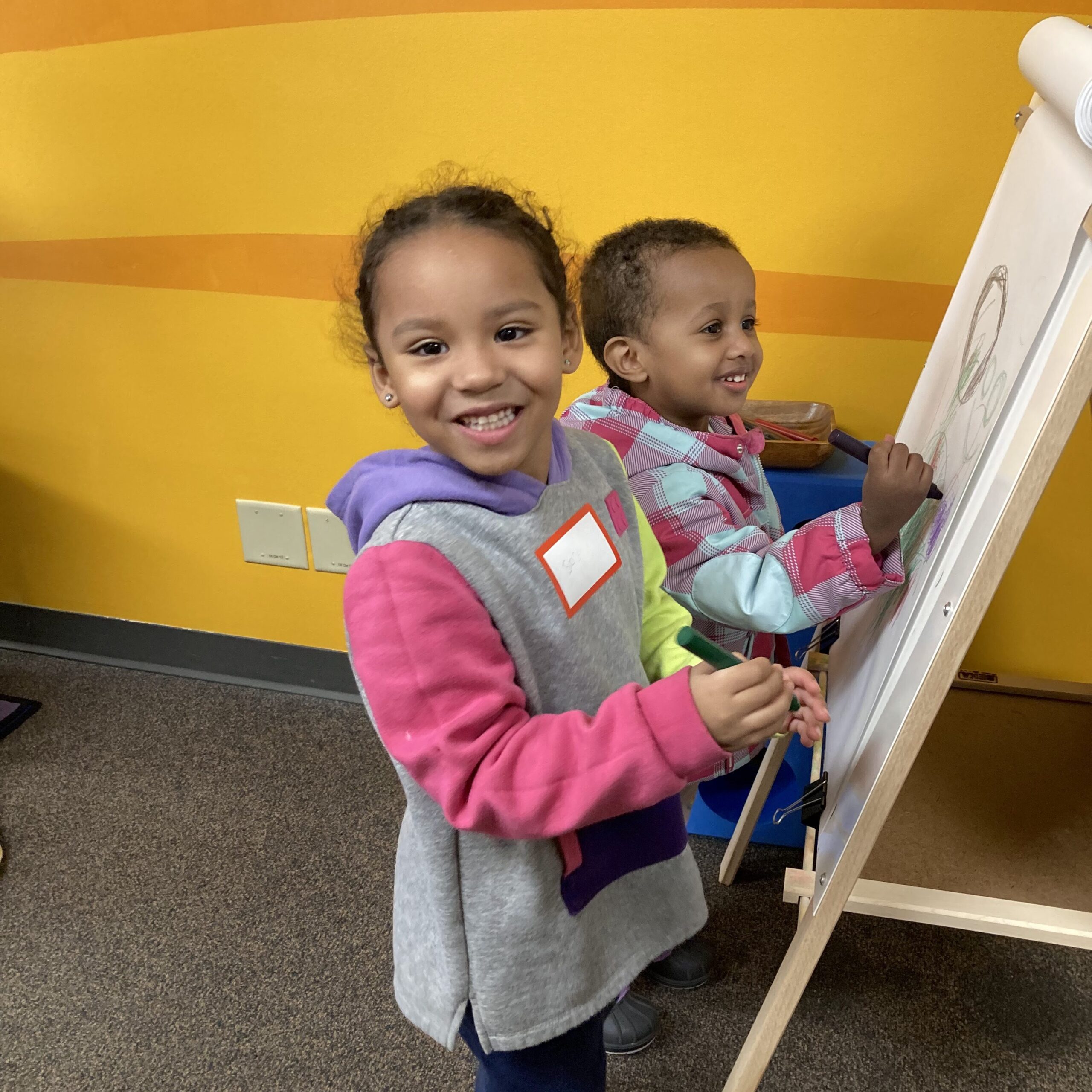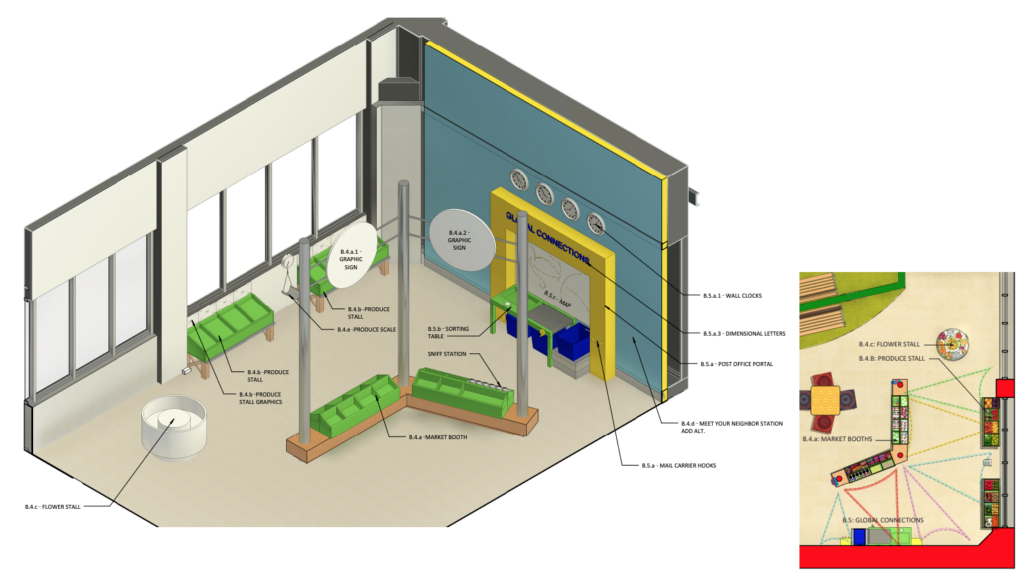By Jill Dubbledee Kuhn, Anisa Hagi-Mohamed, Jo Svaren-Eichler, Heather Allen
Why is GRCM inviting local Central Minnesota artists to fill all three levels of the museum inside and out with art? Exposing children to various types of art encourages imaginative and creative thinking skills that benefit a lifetime. It is our hope that the various types of art generate conversations and new ways of reframing ideas.
Ways art supports children in development and learning:
- Art fosters discovery and experimentation.
“One of my favorite childhood games was to fill a sink with water and put nail polish into it to see what happened when the color burst up the surface, merging into each other as a floating, changing art” -Helen Frankenthaler
This child would later grow up to become an American painter and major contributor to the style of Abstract Expressionism after the post war era. Who knew? All children are born artists. Not all children become artists like Helen; however, all children can carry the skills of expression and critical thinking into adulthood.

- Art nurtures and builds communication skills.
One year old Stella has already been exposed to the elements of art found in the shapes, colors and textures from her board books, toys and even clothing. This is one way she is learning about the world.
- Art is all inclusive.
Art builds a vocabulary from our five senses. It speaks many languages and tells many stories. It never goes out of style. It is for all ages. It can make an ordinary space sing with joy and wonder. It reminds us of the children we all once were as we grew in identity, confidence and personality.

